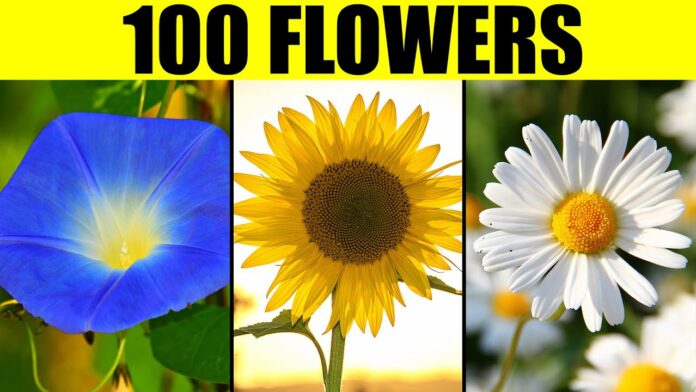In the vast and intricate world of botany, flowers have captivated human interest for centuries. Their unparalleled ability to evoke emotion, symbolize meaning, and contribute to ecological balance renders them an essential focus of both scientific inquiry and aesthetic appreciation. This article delves into the domain of similar flowers, elucidating their characteristics, similarities and differences, and the broader implications of their diversity.
The beauty of flowers extends beyond their visual appeal; it encompasses botanical classification and ecological roles. To thoroughly investigate the topic, the discussion will be organized into several sections that explore classification, symbolic significance, and ecological benefits, among other matters associated with flowers that exhibit similarities.
Exploring Flower Classification and Similarities
As a foundational aspect of botany, the classification of flowers allows for a structured understanding of plant diversity. At the heart of this classification process is the Linnaean system, wherein plants are categorized based on their familial, genus, and species characteristics. This systematic approach not only aids in identification but also highlights the relationships among various flora.
Consider the Rosaceae family, which includes a plethora of flowers, such as roses (genus Rosa) and cherry blossoms (genus Prunus). These flowers share numerous anatomical features, including similar petal arrangements and reproductive structures. Roses are often characterized by their multi-layered petals and thorny stems, while cherry blossoms are distinguished by their delicate pink hues and ephemeral nature. Despite their visual differences, both belong to the same family and possess common traits that unite them.
In addition to structural similarities, certain flowers exhibit phenotypic traits that coincide with their environmental adaptations. For instance, sunflowers (Helianthus annuus) and daisies (Bellis perennis) display a visually striking resemblance due to their disc-shaped flower heads and yellow petals. However, their ecological adaptations vary significantly. Sunflowers thrive in open fields, often leaning toward the sun (a phenomenon known as heliotropism), whereas daisies tend to prefer more temperate and moist environments.
Understanding these classifications not only enriches our botanical knowledge but aids in appreciating the myriad similarities that flowers embody across multiple ecological and geographical contexts.
The Symbolic Language of Flowers
Flowers have long conveyed meaning, acting as symbols in various cultures. Each color, shape, and even scent carries connotations that transcend mere aesthetics. This symbolic language is particularly relevant when examining similar flowers, as various species can evoke similar feelings or messages.
Take, for example, the universality of love as expressed through flowers. While red roses are typically synonymous with passionate love, other flowers like peonies and tulips can evoke similar sentiments within different cultural contexts. White roses convey purity and innocence, while similarly, lilies often symbolize renewal and rebirth. Here, the shared emotional resonance becomes evident, despite differing species and external appearances.
Moreover, the use of flowers in cultural rituals and celebrations accentuates their symbolic significance. In many cultures, flowers compose integral elements of wedding ceremonies, funerals, and festivals, where their meanings reflect the emotions associated with these moments. The parallels in symbolism reinforce the idea that while flowers may differ structurally and environmentally, their emotional significance often transcends their physical forms.
Ecological Roles of Similar Flowers
Beyond aesthetics and symbolism, flowers serve critical ecological roles. Pollination, seed dispersal, and habitat creation illustrate the interconnectedness of flora and their environments. Similar flowers, while sharing ecological functions, can differ in their specific contributions to ecosystems.
Pollinators, such as bees, butterflies, and hummingbirds, are crucial to the reproductive processes of flowering plants. Flowers such as lavender (Lavandula) and borage (Borago officinalis) attract pollinators with their similar bright colors and accessible nectar. The morphological similarities enable both species to coexist within the same ecological niches, fostering biodiversity. However, their influences on the local ecosystem may diverge based on their unique attributes—lavender, with its oil-producing capability, can deter pests, while borage is known for enhancing soil health through nutrient addition.
Furthermore, flowers contribute to habitat creation through varied styles of growth and structure. High-altitude environments, for instance, feature similar flowers adapted to extreme conditions. The alpine anemone (Anemone patens) and the edelweiss (Leontopodium alpinum) both exhibit resilience and structural similarities, crafted to withstand harsh elements. Their presence in these environments not only contributes to aesthetic diversity but also plays a crucial role in soil stabilization and providing sustenance for local fauna.
Moreover, the concerted efforts of various flowering plants can yield cooperative relationships in nature. The biological interactions among similar flowers, such as competition for pollinators, can prompt adaptations that foster species survival. Through natural selection, these adaptations enhance overall ecosystem health, exemplifying the dynamic interplay between flowers and their environments.
The Confluence of Aesthetic and Scientific Appreciation
The examination of similar flowers engenders a deeper appreciation for their beauty and significance. Flowers epitomize the intersection of aesthetic enjoyment and scientific inquiry, demonstrating the multifaceted ways in which they enrich human lives and the natural world. The diverse forms, captivating colors, and unique aromas articulate nature’s impressive variability. Together, these components contribute to a holistic understanding of floral significance.
Furthermore, the potential for cross-disciplinary collaboration emerges, marrying art with science. Artists, poets, and historians draw inspiration from flowers, infusing their work with the profound imagery and symbolism they evoke. In contrast, scientists engage with flowers to unravel their biological processes and ecological roles, emphasizing a continuum of appreciation that bridges multiple fields of study.
In conclusion, the meticulous exploration of similar flowers reveals a complex tapestry of classification, meaning, and ecological importance. Beyond their immediate beauty lies a wealth of information that can deepen our understanding of both plants and their interactions with the environment. Engaging with this knowledge allows for a more profound respect for the natural world, accentuating the essential role flowers play in our lives. By fostering this knowledge, we embrace a deeper connection to the environment, promoting conservation and appreciation for the diversity that surrounds us.





























